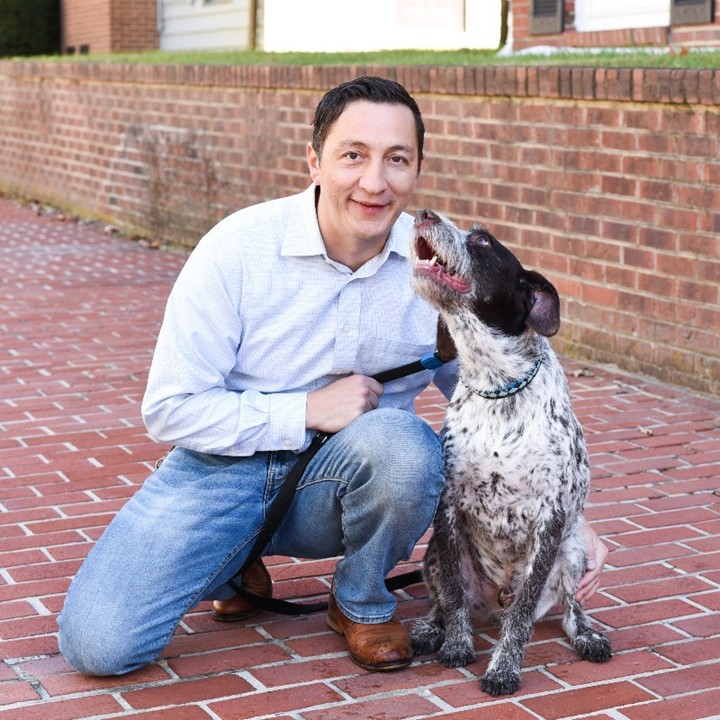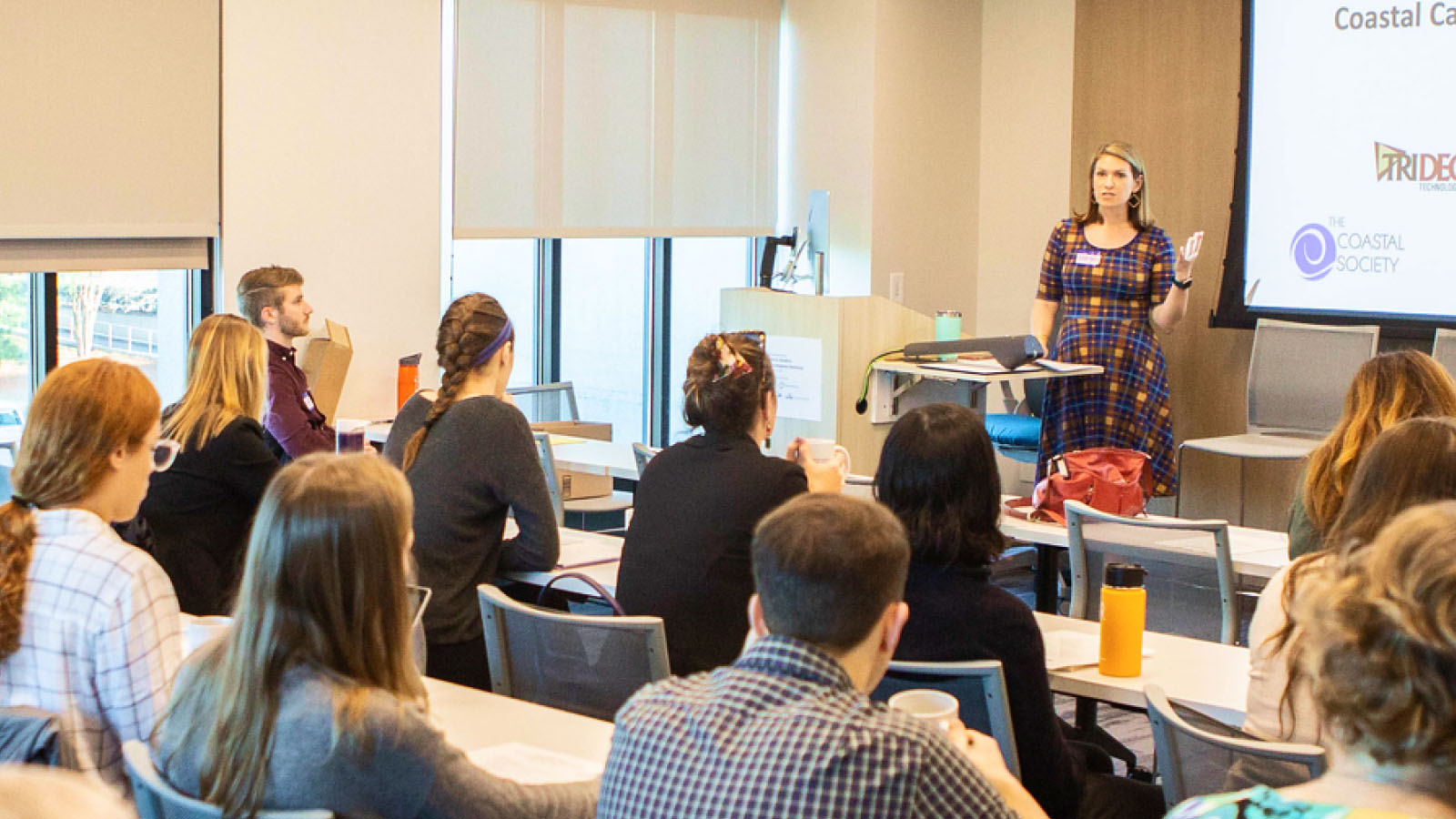The Takeaway: Lessons learned from oyster credit trading market.
Overview
The Chesapeake Bay was once prolific with oysters. However, through many years of pollution, overharvesting, and disease, the bay oysters have declined significantly. This affects the health of the bay in several ways—by removing spawning grounds for other bay species, reducing water filtration, and removing shoreline protection. It also has a significant impact on the state’s seafood industry and those who rely on the bay to make a living. To help restore the Chesapeake Bay’s health, water quality, culture, and jobs, the state and its partners are investing in oyster restoration and aquaculture. One creative approach they are trying for promoting oyster aquaculture is through nutrient credit trading, an innovative way for municipalities and businesses to meet water quality permit requirements using oysters’ pollutant-filtering capabilities to remove nutrients from the water.
Learn more about the successes and challenges Gregorio Sandi, Chesapeake Restoration Section Head with the Maryland Department of the Environment (MDE), and partners encountered developing a nutrient credit trading market using oysters.

Lessons Learned
- Know your market. Know who’s going to buy credits, and make sure the short-term market will be there while you are getting off the ground while continuing to focus on long-term investment opportunities. There was a low demand due to pandemic-related closures. Therefore, oyster farmers were selling fewer oysters, which meant they were generating fewer credits. Additional challenges arose as regulated municipalities found other ways to meet water quality permit requirements, thus limiting the demand for credits.
- Make it easy for people to buy and sell credits. “One model we are exploring to improve buying and selling water and air quality credits is like a typical market platform, where credit sales are centrally managed by one entity and they can be purchased via a two-click solution,” shares Greg. In addition to ease of use, this tool would focus on marketing the credit generators, transparency for the process, and confidence that the buyer is getting what they pay for.
- Take into account government processes. Getting started takes longer than you think. Government processes and timelines are different than private sector. One of the first trades with Anne Arundel County took about one and a half years to get finalized since it had regulatory hurdles. The good news is that now the county has a process and more trades can happen faster.
- Set up a shell recycling program. Having access to oyster shells aids oyster restoration by growing and expanding oyster reefs. Microscopic oyster larvae attach to the shells, and these recycled shells can become home to dozens of baby oysters, called spat. This results in more oysters filtering pollutants. Every coastal town in Maryland now has one.
- Set oyster farmers up for success. A barrier to oyster aquaculture is having access to larvae and seed. This is where organizations like the Oyster Recovery Partnership, the Chesapeake Bay Foundation, and Ferry Cove can provide resources to help oyster growers.
The Process
Why Oysters?
Oysters are prolific filter feeders that remove light-blocking algae from bay waters and help remove excess nutrients, like nitrogen and phosphorus. More oysters equal better water quality. Research conducted at the Virginia Institute of Marine Science found that an acre of restored oyster reef can remove nearly 500 pounds of nitrogen from the water each year. The Nature Conservancy estimates that restoring 1,300 acres of oyster reef would have the same effect as building a new wastewater treatment plant. Considering these facts and other research, a panel of experts advising the federal-state Chesapeake Bay Program recommended awarding nitrogen and phosphorus removal credits to aquaculture operations based on the number and size of oysters that are harvested.
What is Oyster Credit Trading?
The Maryland Department of the Environment (MDE), Maryland Department of Agriculture (MDA), and other partners developed the Water Quality Trading Program. This program is designed to help address water quality issues in the Chesapeake Bay, such as excess nitrogen, phosphorus, and sediment, through nutrient credit trading. The nutrient credit trading market was enabled by legislation in 2018 and allows those involved in agriculture, aquaculture, stormwater control, and environmental restoration to sell credits they create.
One part of this program is focused on oyster aquaculture. How it works is that oyster aquaculture growers generate water quality credits based upon the size of the oyster at harvest. Credits are calculated based on the Chesapeake Bay Partnership’s best management practice expert panel report on nutrient assimilation of oyster tissue.
For example, a small credit is generated when an oyster that is two inches in size is harvested and sold, and a large credit is generated for an oyster class size above 3.5 inches. A credit is defined as one pound of pollutant reduction for the duration of one year. Size matters here, because larger oysters contain more nutrients than smaller ones, and once the oysters are harvested, those nutrients are removed from the water. This removal generates credits that can be sold to municipalities and businesses that discharge nutrients into the water, helping them meet their water quality permit requirements or sustainability goals.
An additional factor is ploidy, or number of genes. Natural oysters have two sets of genes (diploid), but many aquaculture oysters have three sets of genes (triploid), which make them sterile and grow larger and faster, with more resistance to disease. Triploid oysters of the same size will generate a greater credit than their diploid counterparts.
Part of Greg’s job is to ensure that oyster credits being sold equate to nutrient reduction. This is done through a partnership between Maryland Department of the Environment and the Maryland Department of Natural Resources (DNR). Growers get their harvests verified by DNR and provide documentation, along with the oyster aquaculture credit certification and registration form Greg and his team created. Using their harvest verification form, created by DNR, oyster growers provide information on the harvest, such as practice type (e.g., off-bottom using hatchery-produced spat), size class, nitrogen content, and phosphorus content. This information is used to calculate the number of credits. DNR then verifies the credit through an internal review process and provides it back to the grower. Maryland Department of the Environment reviews the application and verification documents, then determines if the oyster grower receives credits. Credits are then published by Maryland Department of the Environment to the public Water Quality Trading Register and Marketplace, where they are made available for sale.
Purchasing Credits
Businesses and municipalities with limits on nutrient emissions from stormwater runoff can purchase the credits to help meet their water quality permit requirements. This trading market can reduce the cost of meeting permit conditions for businesses and municipalities that may otherwise need to invest in expensive retrofits. Credits can only be used to meet permit requirements from the same year they were generated. The seller and buyer negotiate the number and value of the water quality credits. Current credits for sale or wanted can be seen on the MDE Trading Market Board.
Maryland Department of the Environment is actively working to expand sales of credits outside of the regulatory market, and has been coordinating with other nutrient trading programs around the country to determine the best way to create a voluntary market.
Developing the Program
The Maryland Aquaculture Coordinating Council (MACC) provided feedback on forms, sizing, and process, and some of its members served on expert panels. Greg spent a lot of time with oyster growers to understand their operations and how this program interacts with their business. Management partners include Maryland Department of the Environment, Department of Natural Resources, Maryland Aquaculture Coordinating Council, University of Maryland Center for Environmental Science, Anne Arundel County, Charles County, and the Oyster Recovery Partnership.
Factors That Can Affect Trading
Greg shares that before the pandemic, there was much interest, and he fielded a lot of questions about the program. Several counties were interested in supporting this program. Anne Arundel County, for example, wanted to diversify their portfolio when it comes to how they reduce pollution and bought some credits. Charles County wanted to invest in aquaculture to help support local growers—something they are actively moving forward.
The oyster credit trading market was negatively affected by several factors, including the global pandemic, government process, and the success of other water quality programs in the Chesapeake Bay. Greg says, “Many permits are now compliant, and therefore there isn’t much of a market for oyster credits. However, aquaculture credit trading is one tool among many in a water quality improvement toolbox.”
Outcome
“We’ve been discussing ways to improve the trading tools and looking at models where a central entity is managing transactions, people can market their own credits, and possibly a two-click approach to purchase credits—something like the most common online marketplace models,” says Greg. “Other counties in Maryland are looking at water quality trading and using it to help promote additional aquaculture in their waters. Once we have more information, we anticipate this approach can be used elsewhere in the state, and potentially nationwide.”
